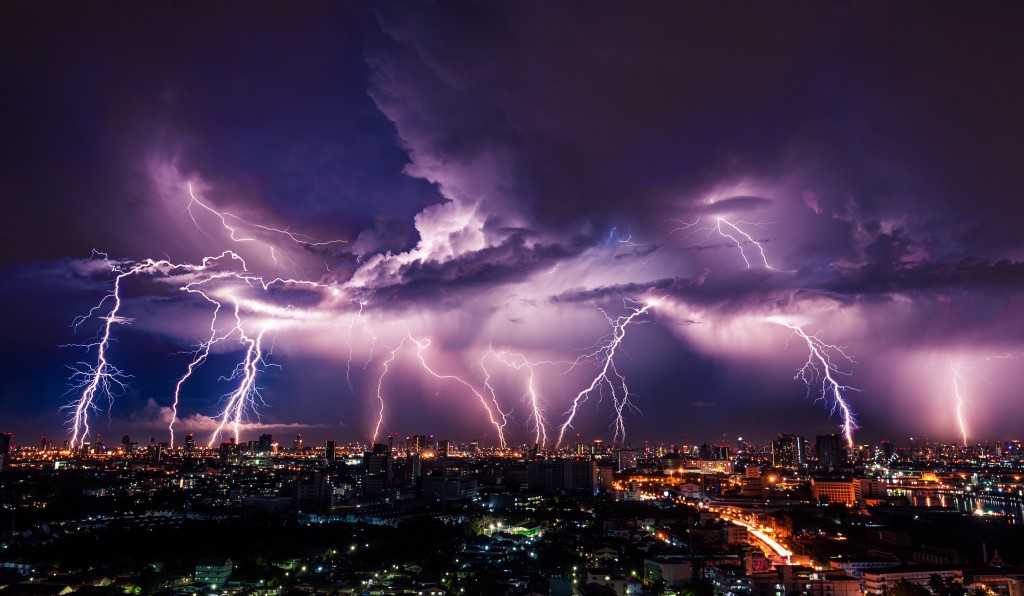Bad weather can be a minor inconvenience at best, but when the weather becomes severe, you could be facing major damage to your home, as well as a risk to your family’s safety.
Storm damage can result from hurricanes, hailstorms, tornadoes, and rainstorms. These bad weather conditions can lead to all sorts of damage to your home, such as broken windows, flooding, cracked roofs, compromised electrical system, and much, much more. That said, understanding the different types of storm damage and knowing how to avoid them will help you minimize their extent as much as possible.
Here are the three different types of storm damage and the best approaches to avoid (and fix) them.
Hail
A hailstorm can range from mild to severe. In mild cases, hailstorms are nothing to worry about unless your house is already compromised. In severe cases, on the other hand, your house may be at risk of structural damage.
Thunderstorms with winds of equal to or greater than 40 mph and/or hail that is at least half an inch in size is considered approaching the severe level. If your area has gone through a storm of this intensity, it is crucial that you have your roof inspected by a professional right away. Hail can cause grave damage to your roof and even knock out roofing granules to make way for leaking and cracking. At the same time, you might want to consider looking for a reliable roof sheeting supplier to build a stronger roof, especially if you live in a high-risk area.
Wind
Strong winds can cause all sorts of damage to your home, including lifted shingles, broken windows, cracked sidings, and blown out outdoor lights. Winds can also knock down nearby trees and structures, which, if you’re unfortunate enough, can land on your house and cause severe damage.

The best way to avoid this type of disaster is to have trees and overhanging branches trimmed regularly. Don’t wait until a storm is coming your way. If there are branches looming over your house, it is best to have them cut away immediately. Even without strong winds, decay can make them fall off and cause major damage to your home.
Similarly, it is crucial to wind-proof your home if a storm is coming. This means installing wood panels to your windows to protect them from strong winds (or better yet, installing high-impact glass windows that can withstand hurricane-force winds), making necessary repairs on the roof, storm-proofing the gutters, and other measures to minimize wind damage as much as possible.
Water
Water damage is the most common type of damage caused by bad weather, be it a rainstorm or a full-on hurricane. It is also one of the most disastrous since water can seep into every part of the home, which can degrade its structural integrity, damage electrical systems, stimulate mould and mildew growth, make way for many other types of damage.
Even if there is no storm coming your way, it is important to prepare your home against water damage. Here are the best ways to do so:
Secure your roof.
Ensure that your roof is in good shape by performing preventive maintenance regularly. Even the slightest amount of water leaks can already cause significant damage to your home’s integrity.
Check your exteriors.
Inspect your sidings, foundation, and other parts of your home’s exterior for any cracks or gaps that water might get into. Seal these holes immediately.
Fix your downspout.
Ensure that your downspout is facing away from your home. Otherwise, the water that streams through it can end up on your foundation, which can weaken the soil under it and cause damage to the structure above.
Shut off electrical systems. If there is a bad storm coming, shut off your electrical system to avoid safety hazards if a flood does occur in your home.
Buy flood protection.
Block water from entering your home by buying flood barriers and installing them in all entrances. If you live in a high-risk area, this is an excellent investment to protect your home from flooding.
If water still manages to get into your house despite your preparation, call in water damage professionals as soon as possible. They will be able to remove as much moisture as possible and find areas where the flood water may have seeped in without you noticing.
Storm damage is not something to be taken lightly, even if it seems minor. Before a heavy storm comes your way, prepare your house to withstand these different types of storm damage as much as possible.

